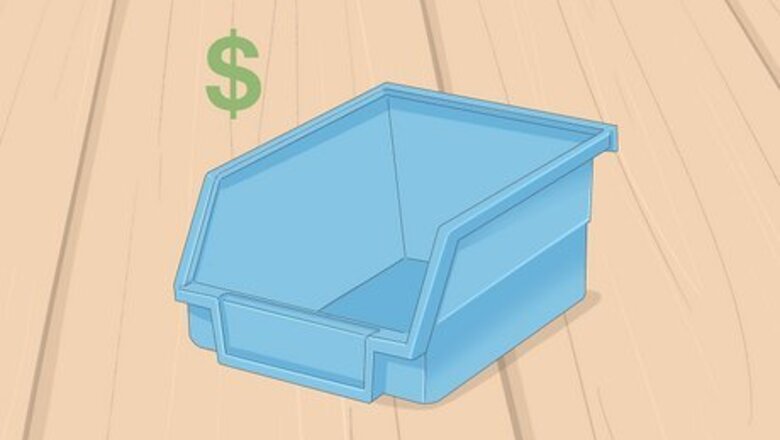
views
Buying or Making a Litter Box

Look for a plastic litter box at your local pet store. You can buy a litter box for your hamster at your local pet store or online. Most commercial litter boxes are triangular in shape to fit into the corner of the hamster's cage or rectangular to fit against the side of the cage. The litter box may come with a lid or a cover to keep the smell inside the box. Some litter boxes also come as pans with high corners and no lid.
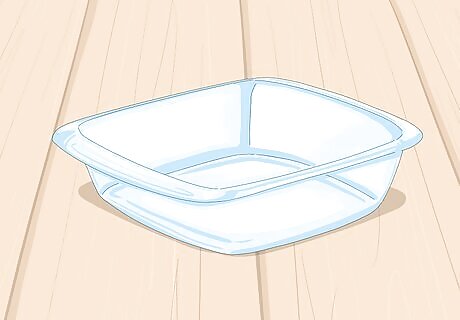
Repurpose a glass dish or bowl. If you want to save money and make your own litter box, you can repurpose a glass dish or bowl. Glass litter boxes are good because your hamster cannot chew on them and they can be rinsed out pretty easily. Look for a glass dish or bowl that is a little bit bigger than your hamster, with high walls. Depending on how big your hamster is, a one-pint or ½ pint glass jar may work.

Use plastic tupperware. Another option is to use a clean, plastic tupperware that is a little larger than your hamster. Make sure the tupperware comes with a lid. Use scissors to cut a 2 to 3 inch hole on one side of the container, about 1 inch above the bottom of the container. This will ensure the litter does not get out of the litter box and all over the cage. You may want to sand down the edges of the hole so there are no sharp points that could scratch your hamster. Keep in mind though plastic litter boxes are easy to make, your hamster may chew on it and you may have to replace it more often than a glass litter box.
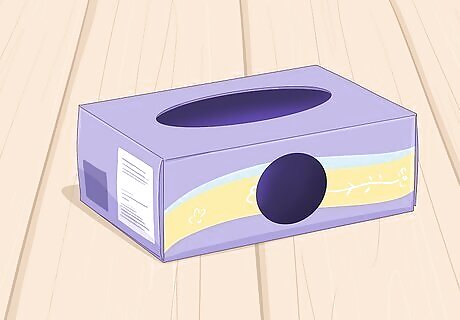
Try a cardboard box for a cheap, fast option. A cardboard box, like a tissue box, can act as good, cheap litter boxes. Once it is used, you can throw it away and replace it with a new box. The cardboard will also help to soak up the urine so the sand in the litter box does not get wet. However, your hamster will likely chew the box quickly and you will need to replace the litter box on a constant basis. Cardboard may be a good temporary option, rather than a permanent solution for a litter box for your hamster.
Selecting Litter for the Box
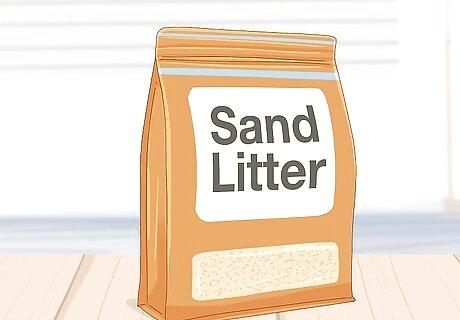
Use sand for a cheap and convenient option. Sand is a good option for litter as your hamster will enjoy peeing on it and digging in it. It is also inexpensive, as chinchilla sand often comes in 1.5 pound bags for $5-$8. Most hamsters also tend to avoid eating the sand and enjoy the texture of going to the bathroom on the sand. Some hamsters enjoy rolling in the sand and it can get all over the cage. Sand does not keep the smell of urine down do you will need to change it often.

Look for Critter Litter at your local pet store. Critter Litter is a commercial product that is made of non-toxic materials and is highly absorbent. It also helps to keep the smell in the litter box down and keeps the surface of the litter dry. It is easy to scoop out of the litter box. Critter Litter can be a more expensive option, especially if you have more than one hamster in the cage at a time. If your hamster pouches the litter in his mouth and continues to eat it, it could lead to health issues. So, if your hamster tends to eat and chew the items in his cage, this may not be an ideal option. Do not use cat litter for the litter box, as it can cause respiratory issues for your hamster.
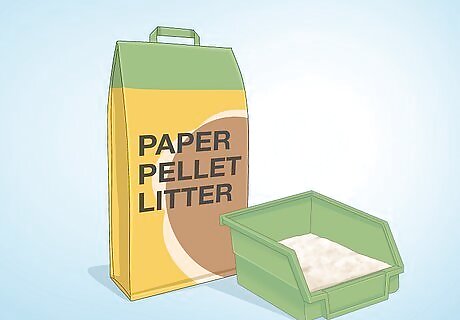
Try paper litter. Paper pellet litter can be found at your local pet store. You can also make your own paper litter by tearing up sheets of the newspaper into small strips or pellets. Paper litter absorbs urine well, does not smell, and is easy to clean out.
Training Your Hamster to Use the Litter Box
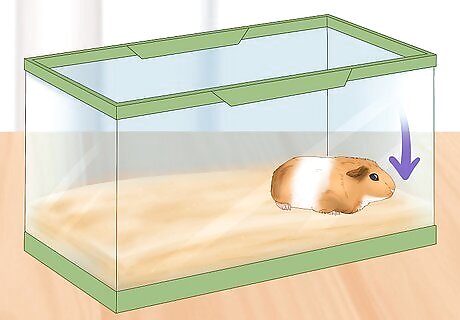
Wait until your hamster chooses his potty corner. Rather than select a spot for the potty yourself in your hamster's cage, let your hamster show you where he would like the potty to go. He will do this by going to the bathroom in a specific corner in his cage. Place the potty in his designated spot. This is an important step, as your hamster may ignore the potty if you simply place it at random in his cage. He may end up going in his designated spot, not in the potty.
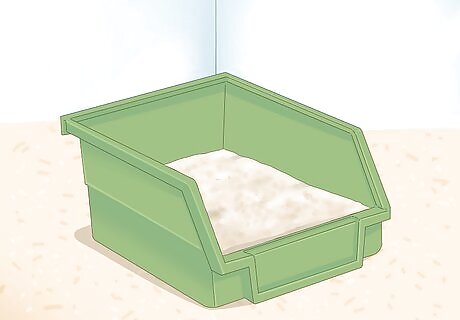
Pour the litter in the litter box. Put enough litter to cover the bottom of the litter box. Then, add a little bit of the soiled bedding from the cage as well as a few droppings. The droppings and the soiled bedding will signal to your hamster that is it okay to go to the bathroom in the litter box.

Place your hamster in the litter box. Once your hamster is awake and moving around in his cage, put him in the litter box. He will sniff the box and try to determine what is going on. Allow your hamster to explore the litter box and avoid forcing your hamster to stay in the potty. Let him investigate and get comfortable in the box. Most hamsters will eventually understand the litter box is for going to the bathroom after some time in it.
Maintaining the Potty Training
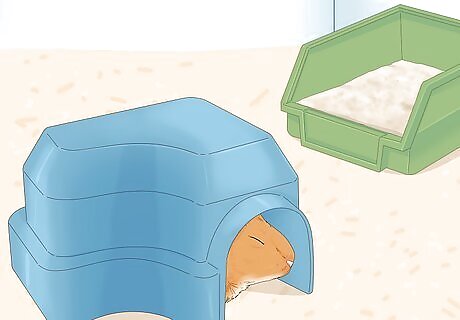
Make sure your hamster has a separate sleeping and eating area. To ensure your hamster uses the litter box for the bathroom and not for sleeping or eating, make sure he has a separate sleeping space and a separate eating space in his cage. Your hamster may not like his current sleeping area if he ends up sleeping in the litter box. Check that there is enough space in the cage for him to eat, sleep, and go to the potty in his litter box. You should also note if the cage is rather large and your hamster is using more than one corner to go to the bathroom. You may need to add another potty to his other go to corner so he gets comfortable using the litter box.

Do not be surprised if your hamster uses the litter box to urinate only. Some hamsters end up using their litter box for urinating only, and will defecate outside of the potty in their cage. The upside is that their pellets usually do not smell and can be easily picked up and flushed down the toilet.
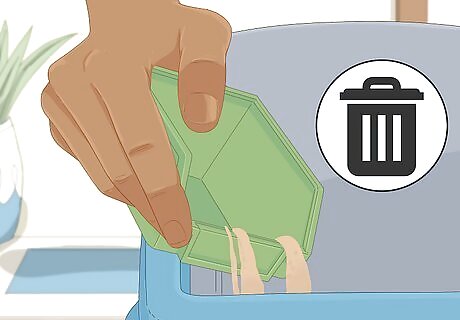
Replace the litter with fresh litter once a day. Maintain the litter box so it is appealing to your hamster by replacing the litter with fresh litter on a consistent basis. Try to toss out the soiled litter once a day, rinse or wash the litter box, and add new litter so the litter box stays fresh for your hamster.


















Comments
0 comment